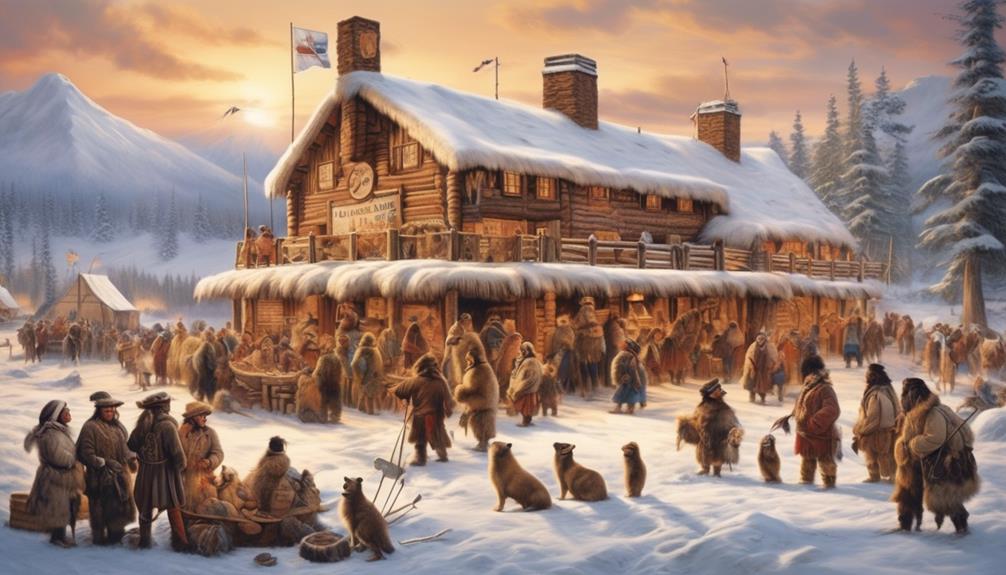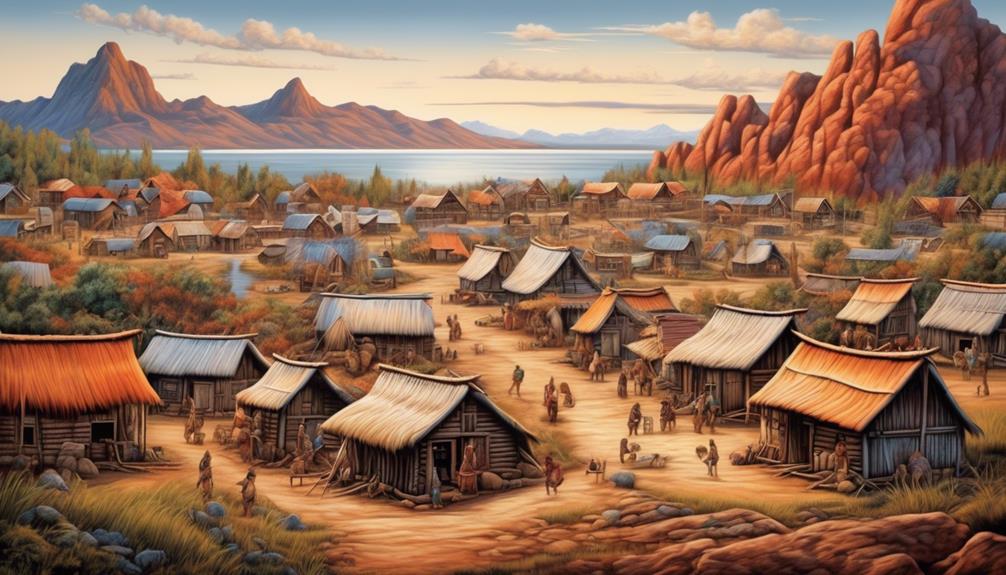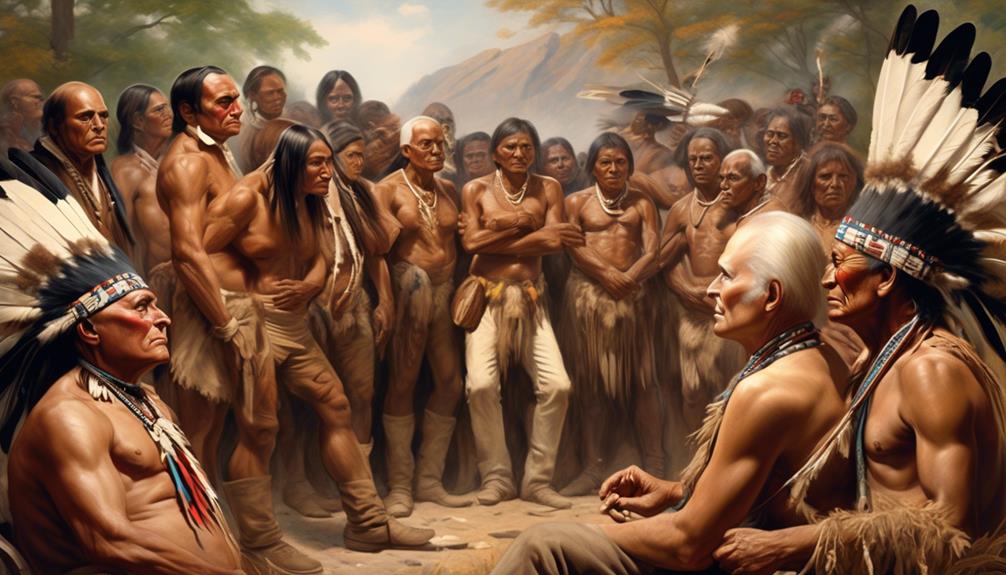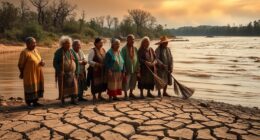Do you want to delve deeper into the fascinating history of Mexico’s indigenous communities?
From the enigmatic Olmecs to the powerful Aztecs, the indigenous groups of Mexico have left a lasting impact on the country's culture, traditions, and identity.
But who were these people, and what were their civilizations like?
Join us as we uncover the fascinating histories and legacies of the indigenous peoples of Mexico, shedding light on their unique cultures, achievements, and contributions to the world.
Key Takeaways
- The Olmecs, Mayans, Aztecs, Zapotecs, Mixtecs, Tarahumaras, and Yaquis were significant indigenous peoples of Mexico.
- These indigenous groups had rich cultural and artistic traditions, including impressive architectural achievements, elaborate ceremonial centers, intricate carvings, and unique artwork.
- They made important contributions to various fields such as trade, astronomy, mathematics, agriculture, and governance, shaping the region's history and culture.
- The indigenous peoples of Mexico have preserved their ancient traditions, languages, and rituals, demonstrating resilience, adaptability, and resistance against colonial powers and the Mexican government.
Olmecs: Early Indigenous Civilization
The Olmecs, as an early Indigenous civilization in Mexico, established complex societies and made significant contributions to the cultural and artistic development of Mesoamerica. Their architectural achievements include the construction of impressive pyramid complexes, such as the famous San Lorenzo and La Venta sites, showcasing their advanced knowledge of engineering and urban planning. The Olmecs also developed extensive trade networks, facilitating the exchange of goods and cultural ideas across Mesoamerica, which played a crucial role in their society's prosperity and influence.
In terms of religious beliefs, the Olmecs were known for their elaborate ceremonial centers and colossal stone heads, believed to represent deities or rulers, indicating a complex religious and political structure. Their artistic achievements, particularly the iconic colossal heads and intricate jade carvings, reflect their sophisticated craftsmanship and artistic expression, providing valuable insights into their cultural and spiritual practices.
The Olmecs' enduring legacy as influential pioneers of Mesoamerican civilization is evident in their architectural marvels, trade networks, religious beliefs, and artistic achievements, which continue to captivate and inspire scholars and enthusiasts alike.
Mayans: Advanced Culture and Society

Among the advanced cultures of Mesoamerica, the Mayans stand out for their remarkable achievements in various aspects of society and culture. The Mayans were known for their advanced understanding of architecture, the development of a sophisticated calendar system, and their groundbreaking contributions to astronomy.
- Mayan Architecture: The Mayans were renowned for their architectural prowess, constructing impressive cities and ceremonial centers. They built massive pyramids, intricate palaces, and elaborate temples, showcasing their advanced knowledge of engineering and design. The structures were often adorned with intricate carvings and artwork, reflecting the Mayan's rich cultural and artistic traditions.
- Mayan Calendar: The Mayans developed a highly sophisticated calendar system that was far ahead of its time. Their calendar was incredibly accurate, incorporating various cycles and astronomical observations. It allowed the Mayans to track celestial events with remarkable precision and plan significant religious and agricultural activities.
- Mayan Astronomy: The Mayans were avid astronomers, studying the movements of celestial bodies with great detail. They accurately predicted eclipses, understood the cycles of planets, and mapped the movement of the stars. Their astronomical knowledge was integrated into their religious beliefs and societal activities, highlighting the interconnectedness of science and culture in Mayan society.
Aztecs: Powerful Empire in Mesoamerica
After exploring the advanced culture and society of the Mayans, our attention now turns to the formidable Aztecs, who rose to power as a dominant empire in Mesoamerica.
The Aztecs' societal structure was complex, with a stratified society consisting of nobility, commoners, and slaves. At the pinnacle of their societal hierarchy was the emperor, who held immense power and was considered a divine figure. Beneath the emperor were the nobles, priests, and warriors, followed by the commoners and then the slaves. This hierarchical system was deeply entrenched in Aztec society and played a crucial role in maintaining social order and stability.
The impact of the Aztecs on modern Mexico is profound. Many aspects of Aztec culture, such as their language, Nahuatl, and agricultural practices, continue to influence contemporary Mexican society. Additionally, the Aztecs' architectural achievements, such as the impressive city of Tenochtitlan, have left a lasting mark on the landscape of modern Mexico.
Furthermore, the Aztecs' contributions to art, mathematics, and astronomy have significantly enriched the cultural heritage of Mexico. Overall, the legacy of the Aztecs endures in the fabric of modern Mexican identity.
Zapotecs and Mixtecs: Southern Indigenous Groups

Studying the southern region of Mexico, one encounters the diverse and historically significant indigenous groups of Zapotecs and Mixtecs, whose rich cultural heritage and societal contributions have played a vital role in shaping the region's identity. The Zapotecs and Mixtecs have preserved their Southern indigenous traditions through language, art, and societal organization.
Southern Indigenous Traditions
The Zapotecs and Mixtecs have a deep-rooted connection to their ancient traditions, seen in their religious ceremonies, agricultural practices, and social structures. These traditions have been passed down through generations, embodying their identity and resilience.
Language and Art of Zapotecs
The Zapotec language, still spoken by thousands, is a testament to their enduring cultural legacy. It reflects their unique worldview and societal values. Zapotec art, known for intricate designs and vibrant colors, serves as a visual representation of their history, beliefs, and customs.
Societal Contributions
Both the Zapotecs and Mixtecs have made significant contributions to the cultural tapestry of Mexico, particularly in the areas of agriculture, architecture, and governance. Their societal structures and communal organization have influenced the region's development and continue to contribute to its rich cultural heritage.
Tarahumaras and Yaquis: Indigenous Peoples of Northern Mexico
The Southern indigenous groups, Zapotecs and Mixtecs, have long been celebrated for their rich cultural heritage and societal contributions. Turning our attention northward, we encounter the equally fascinating indigenous peoples of the Tarahumaras and Yaquis in Northern Mexico.
The Tarahumaras, also known as the Rarámuri, are renowned for their long-distance running ability, deeply rooted traditions, and unique way of life. Their traditional customs include intricate handicrafts, such as basket weaving and woodcarving, as well as a deep spiritual connection with the natural world. The Tarahumara traditions are characterized by their resilience and adaptability, which have allowed them to maintain their cultural identity despite external pressures.
On the other hand, the Yaquis have a complex history of resistance against colonial powers and the Mexican government. The Yaqui resistance movements were aimed at preserving their land, water rights, and autonomy. Their enduring struggle for self-determination and cultural preservation has made them a symbol of indigenous resistance in Mexico. Despite facing significant challenges, the Yaqui people have managed to uphold their traditions and rituals, keeping their rich cultural heritage alive through generations.
Frequently Asked Questions
What Are Some Common Cultural Practices and Traditions of the Indigenous People of Mexico?
We have observed that cultural practices of the indigenous people of Mexico include traditional beliefs, Indigenous community engagement, preservation of customs, and language revitalization efforts. These practices are deeply rooted in their daily lives and play a significant role in maintaining their cultural identity.
Through various rituals, ceremonies, and art forms, they express their connection to the land, ancestors, and spiritual beliefs, contributing to the rich tapestry of Mexican indigenous cultures.
How Did the Arrival of the Spanish Impact the Indigenous Populations of Mexico?
The arrival of the Spanish impacted the indigenous populations of Mexico in profound ways. Colonization led to cultural assimilation as well as economic exploitation.
Resistance movements arose as indigenous groups fought against the oppressive colonial rule. The forced labor system and land seizures further exacerbated the hardships faced by indigenous communities.
These historical events shaped the social and cultural landscape of Mexico, leaving a lasting impact on the indigenous populations.
What Role Did Religion Play in the Lives of the Indigenous People of Mexico?
In the lives of the indigenous people of Mexico, spirituality played a central role. Their rituals and ceremonies were deeply intertwined with their daily existence, guiding their interactions with nature and their community.
However, with the arrival of the Spanish, the indigenous people experienced a shift due to religious syncretism, blending their traditional beliefs with Catholicism. This impacted their spiritual practices and cultural identity, shaping a new religious landscape in Mexico.
How Have Modern Indigenous Communities in Mexico Preserved Their Traditional Languages and Customs?
Preservation efforts by modern indigenous communities in Mexico have played a vital role in cultural resilience.
Through language revitalization programs, traditional customs and knowledge sharing, these communities are actively safeguarding their heritage.
Many have established educational initiatives to teach their languages and history, ensuring the transmission of their cultural legacy to future generations.
These efforts reflect a deep commitment to preserving and celebrating their rich indigenous identities in the face of modern challenges.
What Are Some of the Current Challenges Facing Indigenous Communities in Mexico, and What Efforts Are Being Made to Address Them?
Challenges facing indigenous communities in Mexico include limited access to healthcare, education, and economic opportunities. Solutions involve empowering indigenous leaders, advocating for their rights, and promoting cultural preservation.
Efforts are being made to address these challenges through policy initiatives, community development projects, and increased representation in government. These initiatives aim to promote empowerment and preserve the rich cultural heritage of indigenous communities in Mexico.
Conclusion
In conclusion, the indigenous people of Mexico have a rich and diverse history. From the advanced Mayan civilization to the powerful Aztec empire, their contributions to Mexican history and culture are significant. It's estimated that there are over 12 million indigenous people in Mexico today, accounting for about 10% of the population. Despite facing historical marginalization and discrimination, these indigenous communities have managed to preserve their unique cultures and traditions. They play an essential role in maintaining the rich tapestry of Mexican society.









